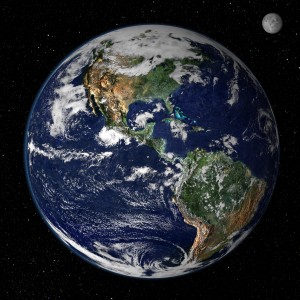
Last year it came later in August; the year before that, we lasted until September. But in 2013, August 20 marked Earth Overshoot Day – the day that the Earth’s 7.1 billion people consumed more resources than the Earth can regenerate in a given year. After that day each year, we dip into next year’s account, liquidating stocks of natural resources such as forests, fisheries and soil, while living large on deficit spending to support our current consumption of food, power, transportation and more.
This isn’t a rare raid into the emergency fund for an unexpected crisis or occasional over-indulgence. It’s been happening since the 1960s. And each year’s deficit has a cumulative effect on the planet, much like the annual federal deficit adds to the national debt. According to the Global Footprint Network, which estimates Earth Overshoot Day each year, we now need 1.5 Earths to satisfy our current demands and desires. But that’s a global figure. Wealthy nations – such as the United States – have a larger Ecological Footprint than poorer ones, meaning they use larger areas of land and sea to maintain their lifestyles. If everyone in the world lived as Americans do, we would need 5 Earths to support humanity.
If you want to see how your lifestyle compares to the global or national average, take the Global Footprint Network’s personal online footprint quiz. You’ll get an avatar (complete with customized hairdo and clothes) that wanders around an animated neighborhood avoiding resources that crash down to the ground as you answer questions about your life. So when you indicate how much meat you eat, for example, a butchershop lands on the block. How much do you drive? A car appears in the driveway. At the end of the quiz, the calculator tallies your score and breaks down your resource use into five major categories: food, shelter, mobility, goods and services.
No matter how many Earths we’d like to have, we only get one. And so, based on your answers, the Footprint Calculator gives you options for reducing your footprint. Most of these options focus on ways to limit your withdrawals from the world’s ecological bank account: avoiding air travel, eating less processed food, or making other lifestyle changes to limit your impact.
But at The Downstream Project we know there are also many ways to increase ecological deposits locally: Many of our partners in the Shenandoah Valley actively restore natural habitat by planting trees, creating riparian buffers along streambeds, and in general managing the land more sustainably for the long-term. Check out our projects page for a sampling of how some people are adding to our resource base locally, and helping all of us globally.

